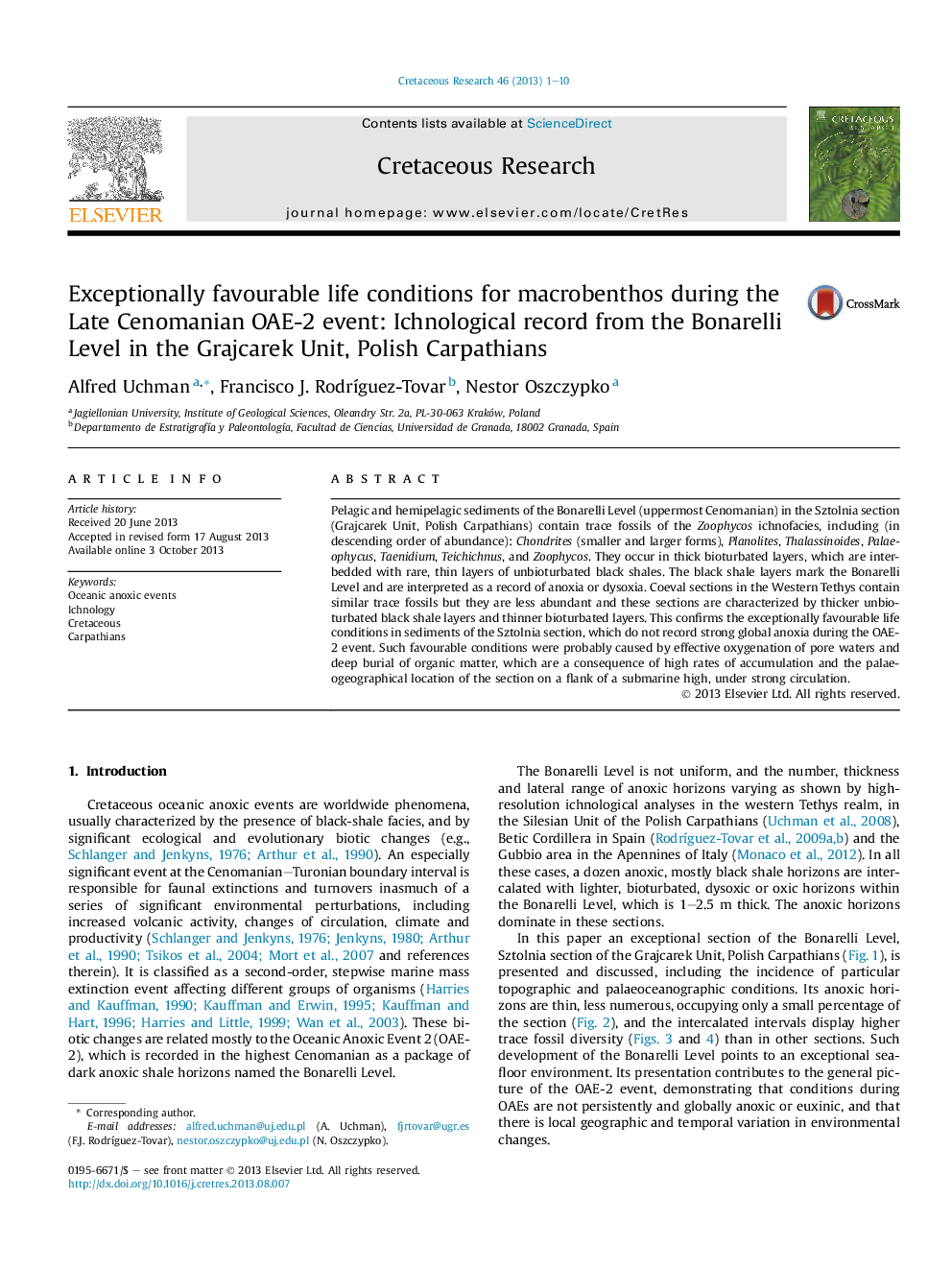| Article ID | Journal | Published Year | Pages | File Type |
|---|---|---|---|---|
| 6448299 | Cretaceous Research | 2013 | 10 Pages |
Abstract
Pelagic and hemipelagic sediments of the Bonarelli Level (uppermost Cenomanian) in the Sztolnia section (Grajcarek Unit, Polish Carpathians) contain trace fossils of the Zoophycos ichnofacies, including (in descending order of abundance): Chondrites (smaller and larger forms), Planolites, Thalassinoides, Palaeophycus, Taenidium, Teichichnus, and Zoophycos. They occur in thick bioturbated layers, which are interbedded with rare, thin layers of unbioturbated black shales. The black shale layers mark the Bonarelli Level and are interpreted as a record of anoxia or dysoxia. Coeval sections in the Western Tethys contain similar trace fossils but they are less abundant and these sections are characterized by thicker unbioturbated black shale layers and thinner bioturbated layers. This confirms the exceptionally favourable life conditions in sediments of the Sztolnia section, which do not record strong global anoxia during the OAE-2 event. Such favourable conditions were probably caused by effective oxygenation of pore waters and deep burial of organic matter, which are a consequence of high rates of accumulation and the palaeogeographical location of the section on a flank of a submarine high, under strong circulation.
Related Topics
Physical Sciences and Engineering
Earth and Planetary Sciences
Palaeontology
Authors
Alfred Uchman, Francisco J. RodrÃguez-Tovar, Nestor Oszczypko,
